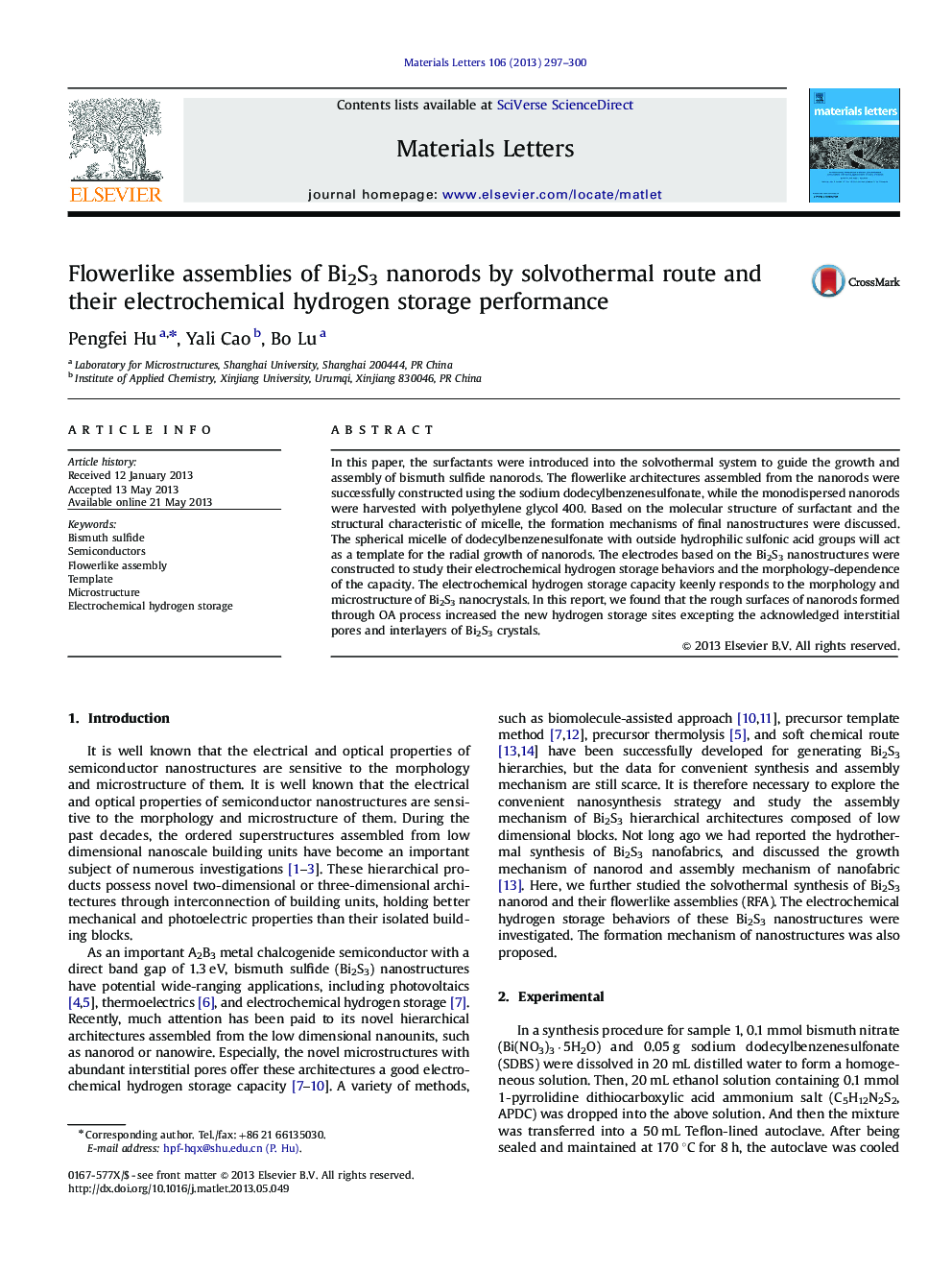| Article ID | Journal | Published Year | Pages | File Type |
|---|---|---|---|---|
| 8022327 | Materials Letters | 2013 | 4 Pages |
Abstract
In this paper, the surfactants were introduced into the solvothermal system to guide the growth and assembly of bismuth sulfide nanorods. The flowerlike architectures assembled from the nanorods were successfully constructed using the sodium dodecylbenzenesulfonate, while the monodispersed nanorods were harvested with polyethylene glycol 400. Based on the molecular structure of surfactant and the structural characteristic of micelle, the formation mechanisms of final nanostructures were discussed. The spherical micelle of dodecylbenzenesulfonate with outside hydrophilic sulfonic acid groups will act as a template for the radial growth of nanorods. The electrodes based on the Bi2S3 nanostructures were constructed to study their electrochemical hydrogen storage behaviors and the morphology-dependence of the capacity. The electrochemical hydrogen storage capacity keenly responds to the morphology and microstructure of Bi2S3 nanocrystals. In this report, we found that the rough surfaces of nanorods formed through OA process increased the new hydrogen storage sites excepting the acknowledged interstitial pores and interlayers of Bi2S3 crystals.
Related Topics
Physical Sciences and Engineering
Materials Science
Nanotechnology
Authors
Pengfei Hu, Yali Cao, Bo Lu,
